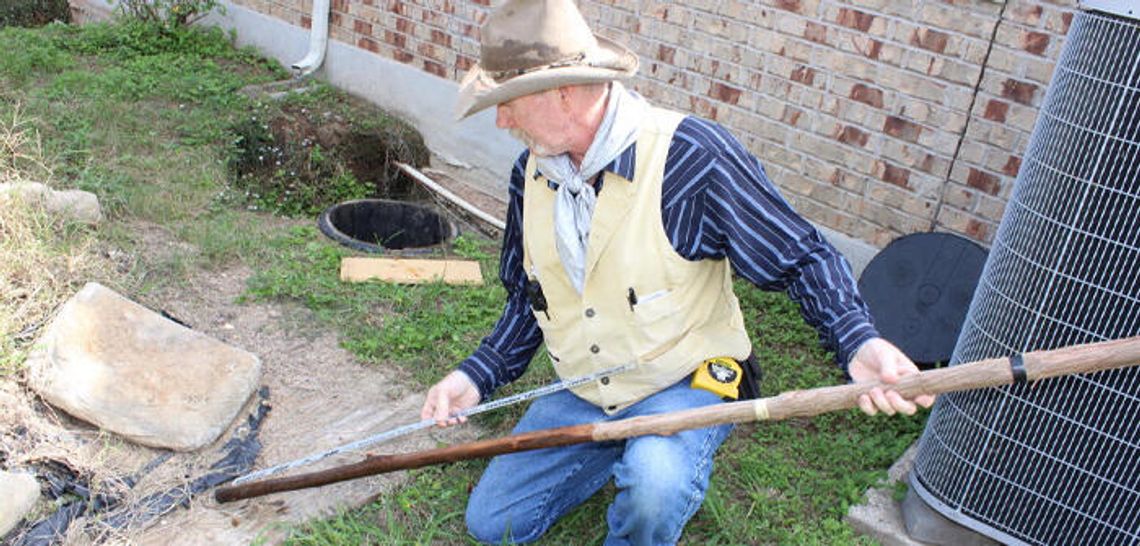By Sahar Chmais
In this Texas home, the grass is always green, even though the lawn has not been watered since 2008. The trees sprout long and high, a rose bush reaches the roof and the green beans grow strong.
There is a house in Whispering Hollow in Buda that sits on ever-flowing spring water, which may sound like a goldmine for residents in Central Texas.
Instead it has created a nightmare for James and Debra Fort, as they sleep and awaken to loud bangs and water-flood alarms. Like a living and breathing being, the house shifts, moves and cracks.
“Do you remember what happened to the condo in Florida,” James referenced the Surfside condominium collapse. “That’s what I’m afraid will happen here.”
Photos cannot be hung on the mantle as the movement causes them to fall. The granite stone in the kitchen has a traceable crack running through it. Doors inside the house no longer close properly, as they cannot fit inside their ever-moving frame.
Tape markings cling to the walls and ground to track the expansion of old cracks and mark the new ones.
And in one of the hottest housing markets, the Forts cannot sell their 13-year-old, two-story, stone cul de sac home.
“We bought the home for about $250,000, I put $100,000 down, so my equity is way up there,” James, the home’s original owner, said. “Then I started having problems. Now do you know what my equity is? Goose egg. Zero. It’s common sense, you don’t build over water, eventually it’s going to come back to haunt you.”
Recently, James began getting inquiries to sell his home, but once the situation is assessed, realtors call back and say “no way can we sell this home unless you fix it,” James said. “That’s the key; it’s not fixable,” he added.
To help manage the problem, sump pumps were installed at the homes experiencing water issues, but James pumps so much water that he has gone through five sump pumps due to overuse. He decided to get a heavy-grade pump, which pumps 80 gallons of water a minute, or 4,800 gallons per hour. When the pump is on, it creates a loud humming accompanied by a vibration.
The water drain, which was installed by the city, drains water over his lawn and onto the electric and cable box and into the street’s storm drain. This alone has caused him power outage issues.
Even after pumping and watching the water dry up, as soon as the pump is turned off, the water resurfaces within the hour.
The Forts are not alone in this situation, but their home is the most severe case. Just next door to the Fort home, their neighbor Paul also purchased this home as part of his retirement plan.
Paul would live off of his 401K for a few years, then sell his two-story home and live in something more manageable. But his house has cracks all over, inside and out. There is a significant gap between Paul’s home and driveway, and in the masonry work, there is a large crack from all the shifting.
Long gone is Paul’s plan to sell.
In 2001, after the property was annexed for development but before the homes were built, a geologist from the Barton Springs Edwards Aquifer Conservation District (BSEACD), Brian Hunt, assessed the property for an issue regarding a recharge zone. Springs and seeps were mapped as issuing from a perched aquifer.
A perched aquifer occurs when water from the surface infiltrates a porous medium which sits on top of an impermeable material that water cannot go through. The water then builds up and cannot move down, so it moves laterally.
This perched aquifer was not a new phenomenon in the area — Hunt said it could be thousands, or tens of thousands of years old.
The developer may or may have not known about its existence, but the information was out there, Hunt said.
The builder of the Fort home was Ryland Homes, but it has since gone out of business and was purchased by Lennar Homes.
City streets are also affected by the underground water. One drive through the Whispering Hollow neighborhood and it is obvious that the road infrastructure is breaking down. On certain streets they are bumpy, like a rollercoaster. They are cracked, and in different weather conditions the cracks and bumps become more noticeable due to expansion from hot weather, James said while giving a tour of the road.
The city of Buda met in October to discuss findings in the area and what steps could be taken.
When property is purchased properly, sellers have to make certain disclosures, but those disclosures stand for a maximum of four year statute of limitation, City Attorney George Hyde told the council. If the homes were purchased more than four years ago, there will likely be no recourse on that for the homeowners, he added.
Several solutions were presented to the council by AquaStrategies, a water planning and engineering company. The city is concerned about roads as the water is not contained to just the homes. Over time, the water destroys the city’s roads.
As this long standing issue proves difficult to fix, council gave direction to staff to put together a committee to further investigate the issue. This committee will involve consultants, residents and city staff.
After years of battling the issue, which included raising the Fort home twice, James said he decided to contact an attorney, but these things take a long time, James said in an uncertain tone.











